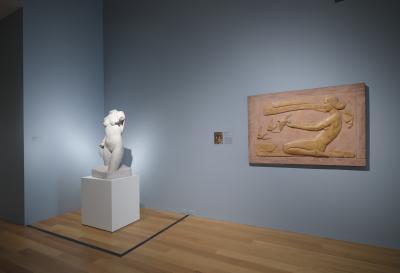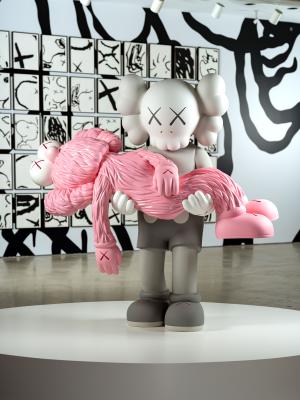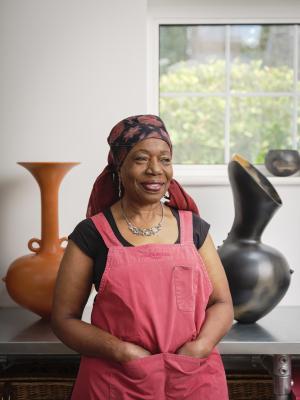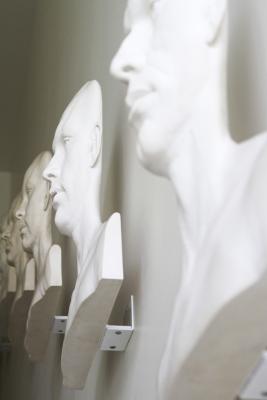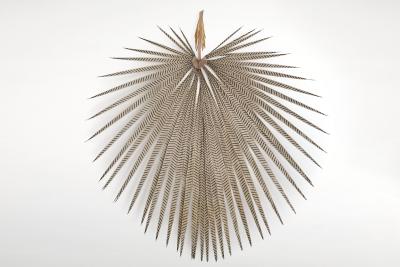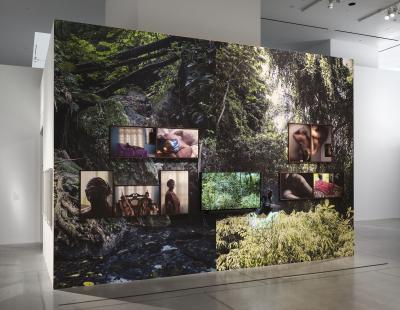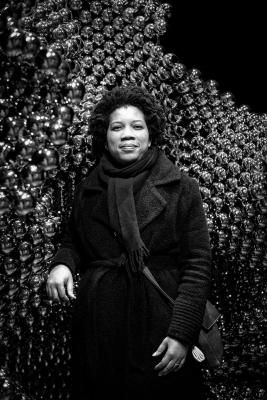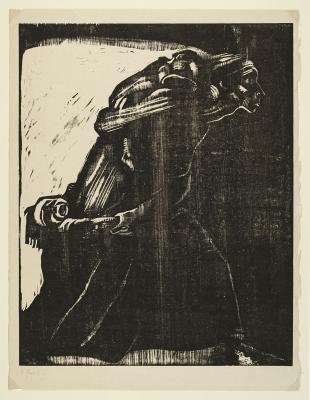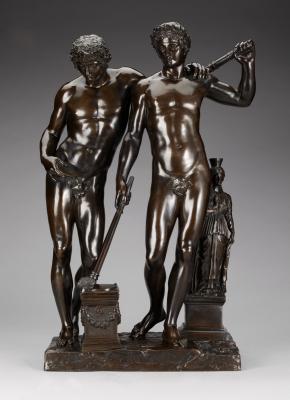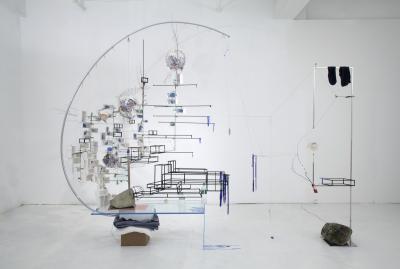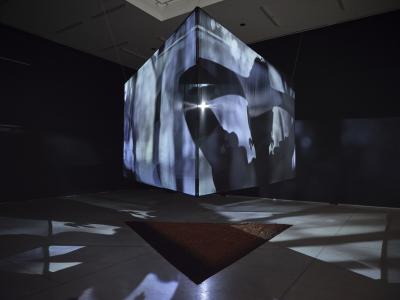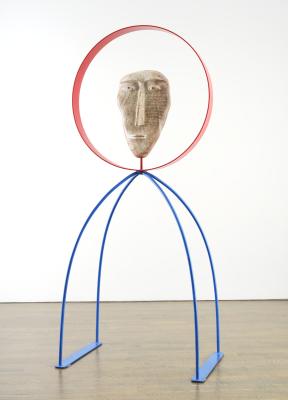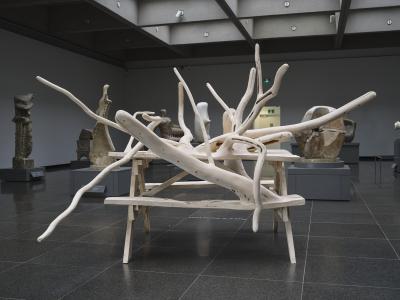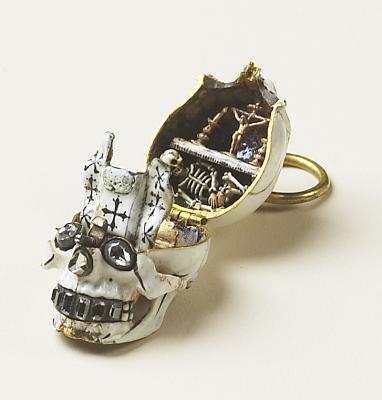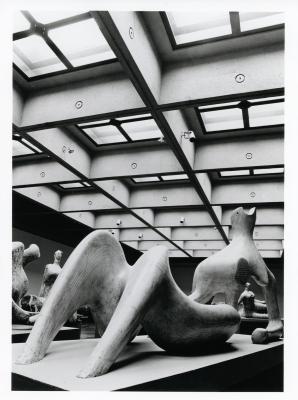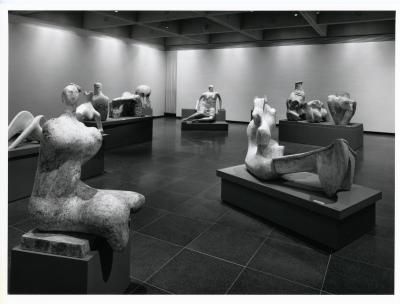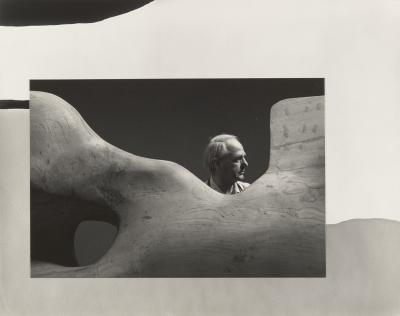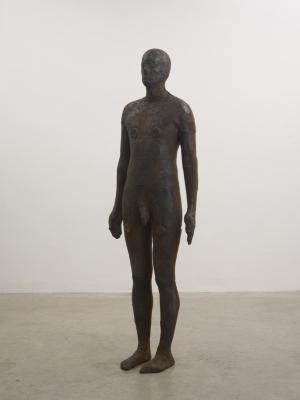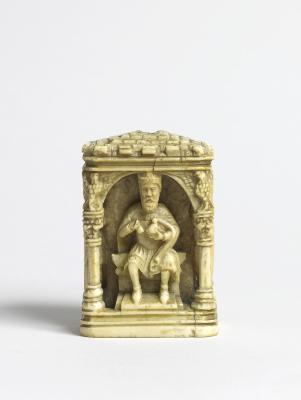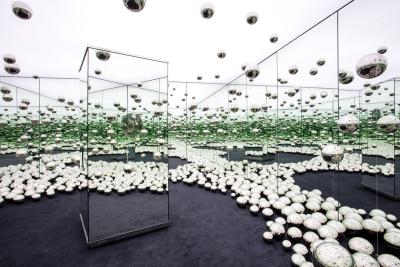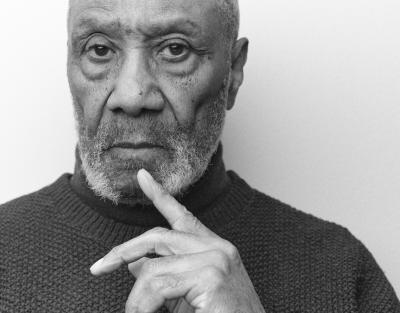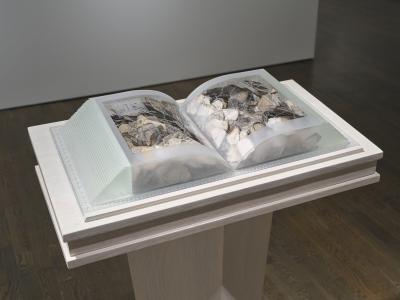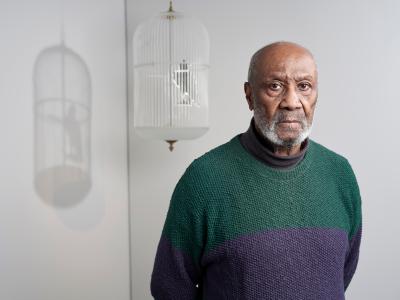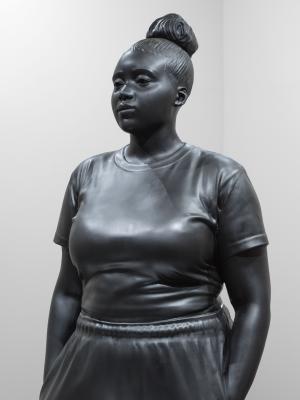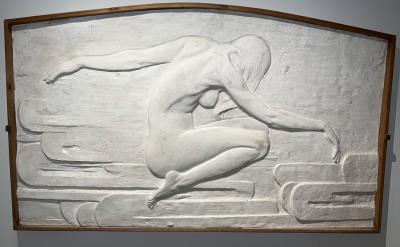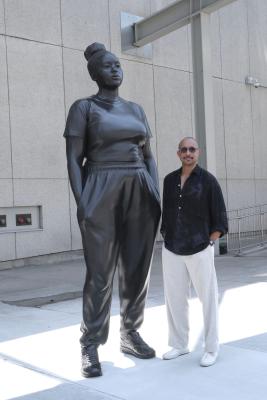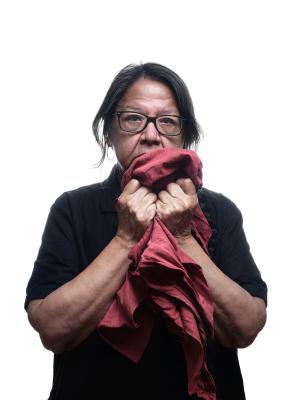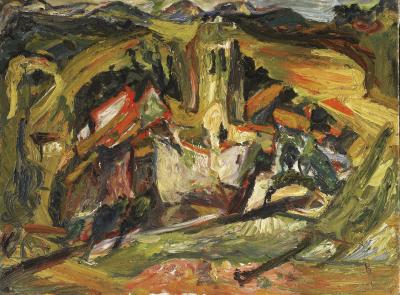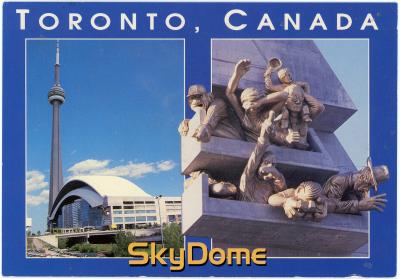
Dawn and Draped Torso
Learn more about the lifelong partnership and legacy of Frances Norma Loring and Florence Wyle
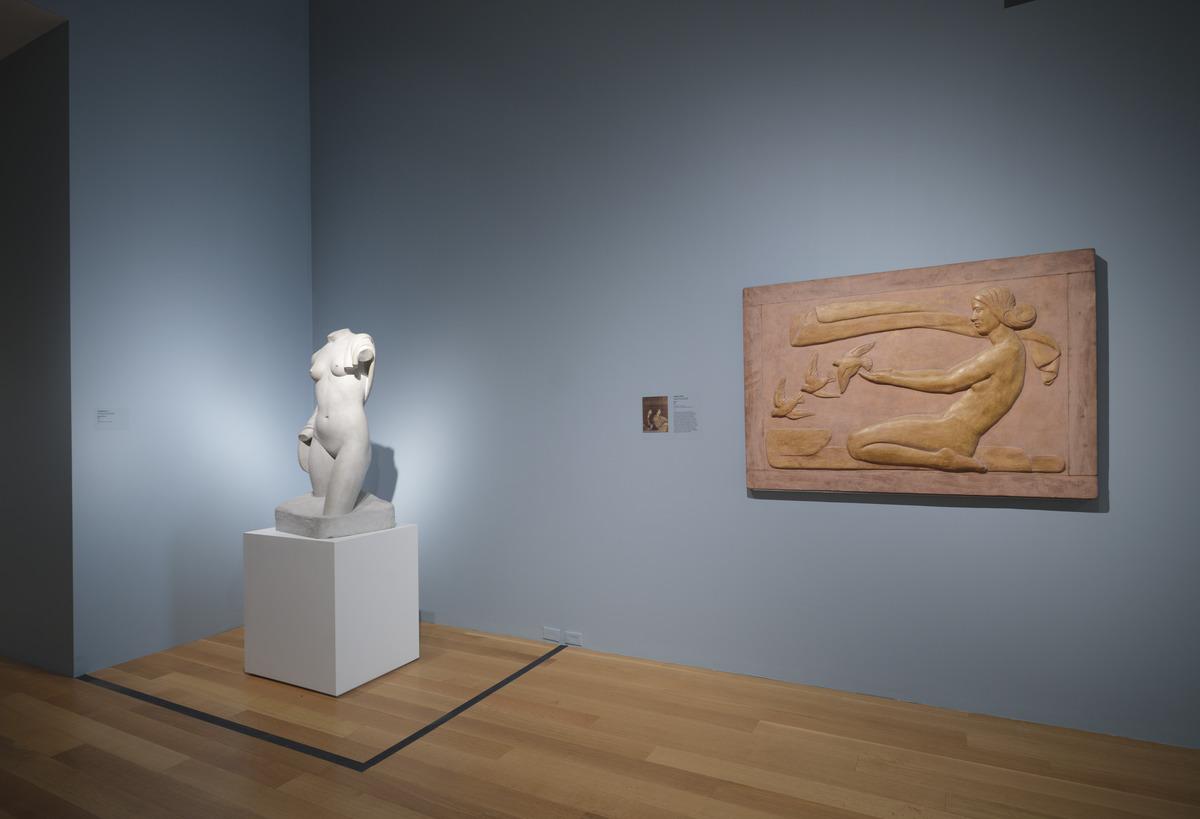
Installation view: Her Space, April 1, 2023 - Ongoing, Art Gallery of Ontario. Artwork: Florence Wyle. Draped Torso, 1939; Frances Norma Loring, Dawn, c. 1948. Photo © AGO.
Walking through Her Space, you’ll notice that the two sculptures on view in the exhibition are placed beside each other - one on the wall, the other on a pedestal beside it. While one may think this is simply a grouping of mediums, the placement of these sculptures is symbolic of a life-long partnership between two artists.
January’s RBC Art Pick features Dawn (1948) by Frances Norma Loring (1887-1968) and Draped Torso (1939) by Florence Wyle (1881-1968). Both Wyle and Loring are regarded as some of the most influential sculptors in Canadian Modern art. Loring and Wyle met at the Art Institute of Chicago in 1905, becoming domestic and creative collaborators for 55 years until they died three weeks apart in 1968. Fondly nicknamed “The Girls” because of how closely the two worked together, this nickname was also a subtle acknowledgement of how their partnership defied heteronormative values.
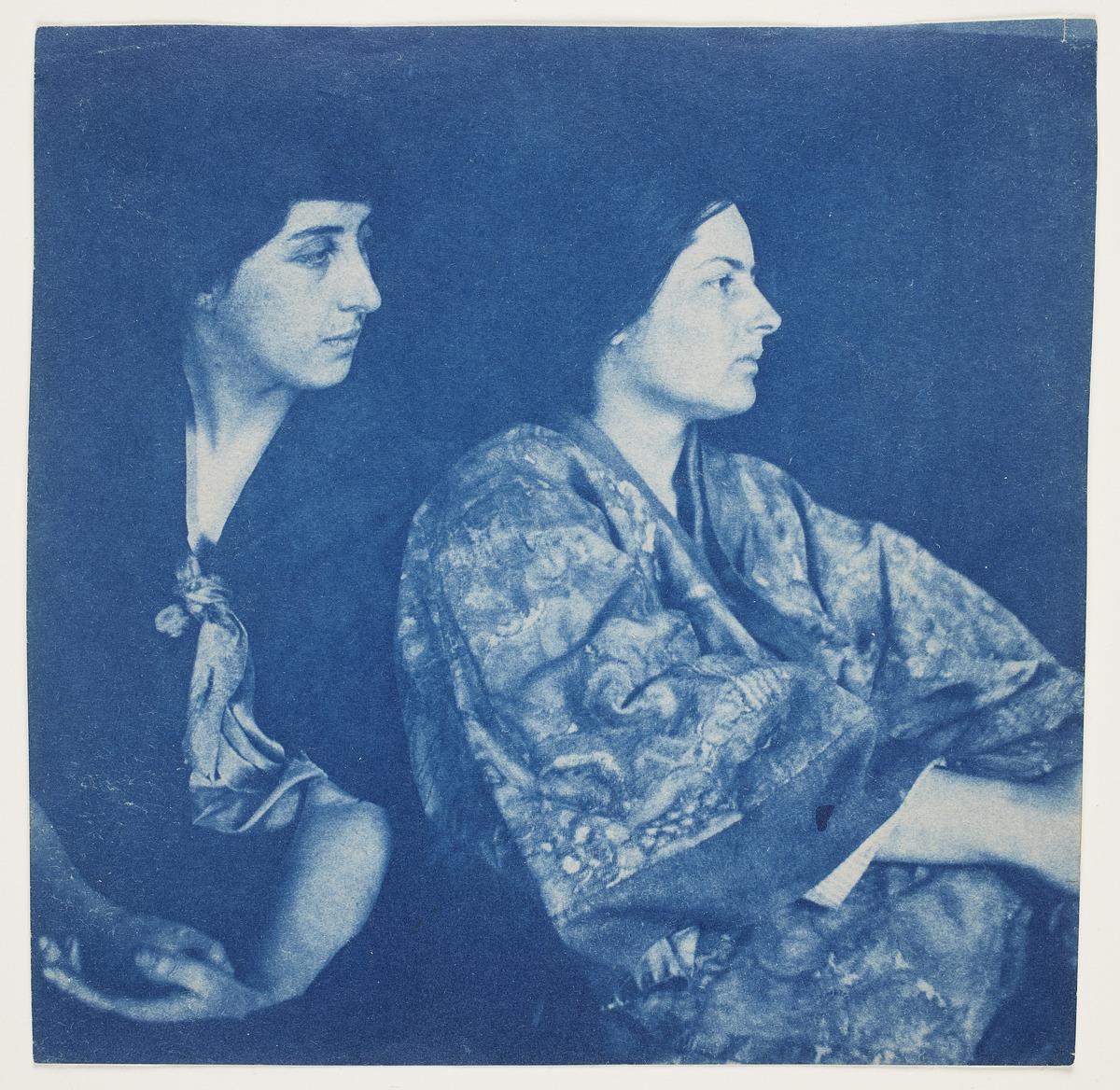
Robert Joseph Flaherty, Portrait of Frances Loring and Florence Wyle [Church Street, Toronto], 1914. Cyanotype, sheet: 14.6 x 14.7 cm. Gift of the Estates of Frances Loring and Florence Wyle, 1983. © Art Gallery of Ontario. 86/117.
Initially working in New York, the pair moved to Toronto in 1913, arriving at an art scene where the craft of sculpture was still budding. Making waves at a time when there were very few women sculptures in Canada, Wyle and Loring’s names became inextricable not only to each other but also to the history of sculpture in Canada. The pair created countless commissions for monuments across the country and were active promoters of the craft. In 1928, they established the Sculptors’ Society in Canada with fellow artists Emanuel Hahn, Elizabeth Wyn Wood and Henri Hébert. They housed the head office in the pair's studio, a converted Sunday school building known as “The Church.”
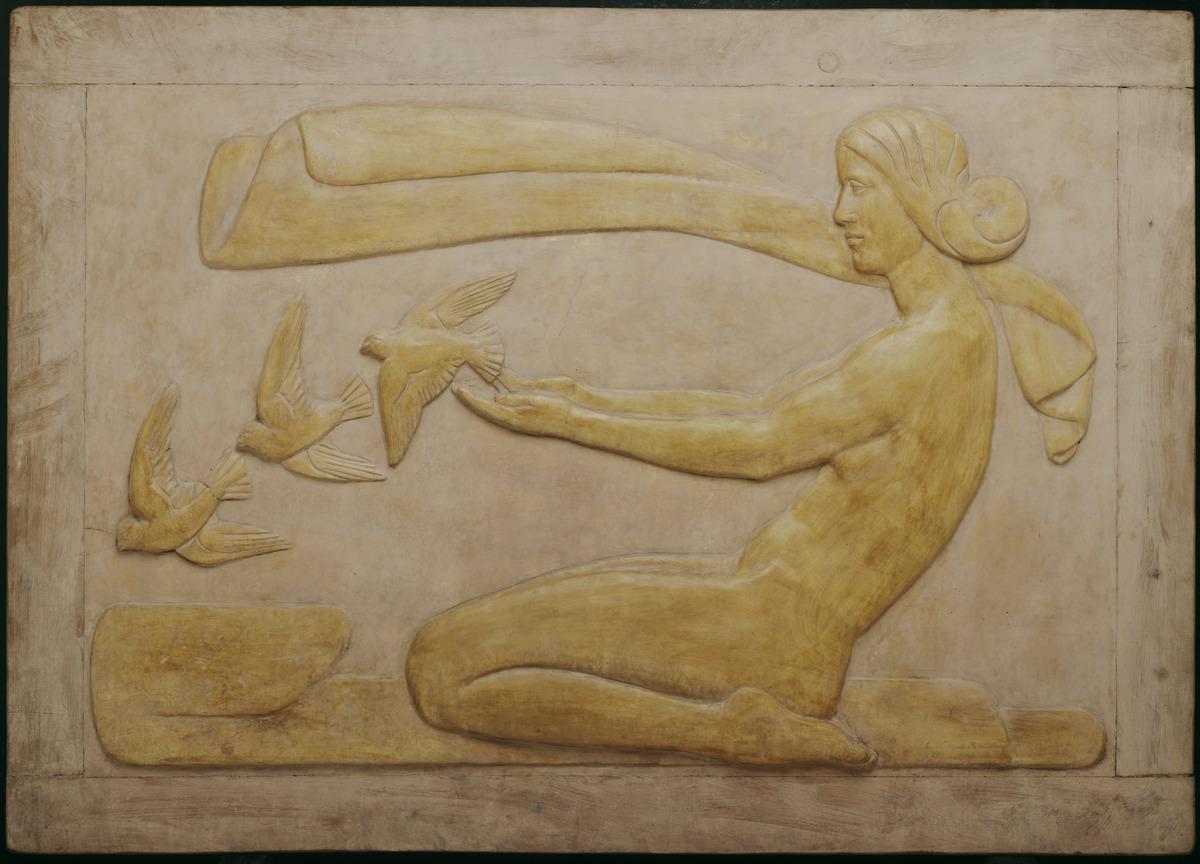
Frances Norma Loring, Dawn, c. 1948. Gelvized plaster mounted on wood, Overall: 101 x 142.5 cm. Art Gallery of Ontario. Gift of the Estates of Frances Loring and Florence Wyle, 1983. © Art Gallery of Ontario. 83/70.
Dawn was originally commissioned as a relief (a sculptural work that is attached to a flat surface) for the interior of the Bank of Montreal at King Street and Bay Street in Toronto. The work features the side profile of a kneeling nude figure, their arms extended forward gracefully as if they had just released the doves in front of them. Dawn demonstrates Loring’s interest in classical forms, Greek sculpture, and her admiration for human anatomy. The work also represents Loring’s response to Modernism: the woman is boldly stylized and simplified, and the figure is smoothed out instead of emphasizing anatomical features. In this work, Loring expresses the essence of the figure through elegant lines and contours.
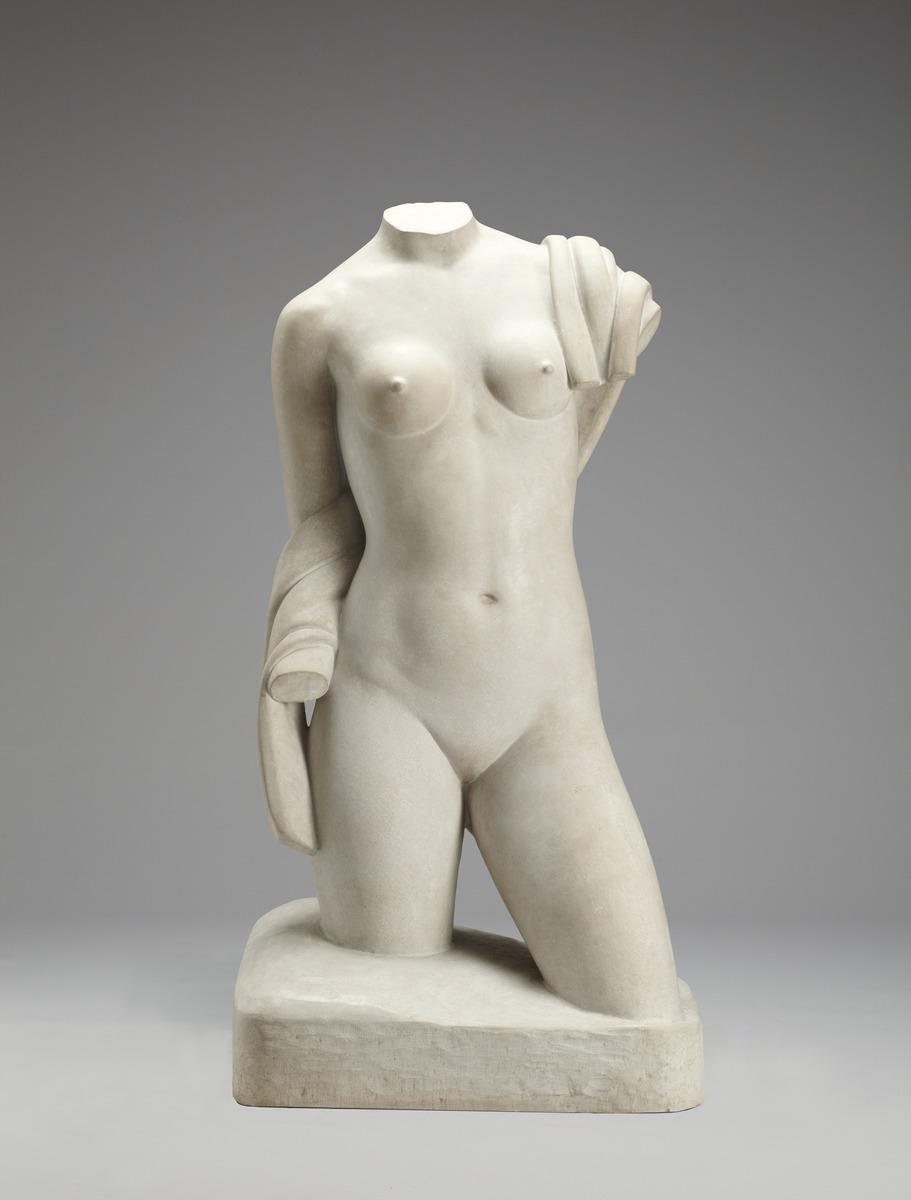
Florence Wyle. Draped Torso, 1939. marble, Overall: 111.8 × 58.4 × 43.2 cm, 542 lb. (44 × 23 × 17 in., 245.8 kg). Art Gallery of Ontario. Gift of Reuben Wells Leonard Estate, 1958. © Art Gallery of Ontario 57/44
A similar appreciation for the beauty of human anatomy can be seen in Wyle’s Draped Torso. Also influenced by classical forms and Greek sculpture, Draped Torso is symbolic of Wyle’s transition to modern expression. Wyle preferred figure work and saw the female torso as the subject that showcased her fullest possible expression. Wyle was once quoted as saying females were “Mother of the Race,” which was also the title of her first sculpture featuring a torso. She began sculpting torsos in 1930 and continued until the end of her career. Draped Torso marks a period when Wyle’s torsos were becoming more stylized. In Draped Torso, Wyle sculpted the torso of a nude woman severed at mid-thigh. A cloth is draped over the figure’s shoulder and snakes through the crook of her other arm. Like Loring’s Dawn, Draped Torso does not focus on anatomical accuracy but is instead smoothed out, giving the piece a soft, feminine essence. Compared to Wyle’s earlier torso works depicting accidental breakage of limbs, in Draped Torso the limbs are “trued,” meaning the termination points are smoothed out and deliberate.
Loring and Wyle’s legacy lives on beyond gallery walls in the Loring-Wyle Parkette, located on St. Clair Avenue East in Toronto, right beside their old studio “The Church” The parkette features portrait busts of each artist that they made of each other, as well as Wyle’s sculptures Young Girl (1938) and Harvester (1940).
The AGO is actively bringing together a community of philanthropists and funders to fulfill Loring and Wyle’s wills and build support for sculpture. You can find out more details here.
Take a closer look at Dawn and Draped Torso in the AGO exhibition Her Space, on view on Level 2 of the AGO in the R. Samuel McLaughlin Gallery and the Joan & Jerry Lozinski Gallery (galleries 201 and 247).

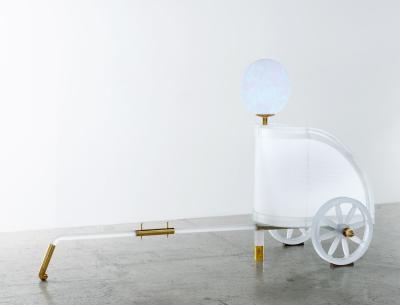
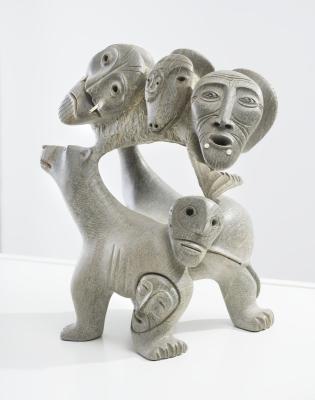


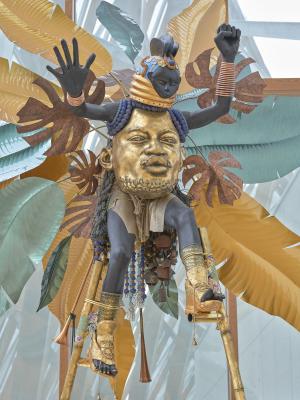


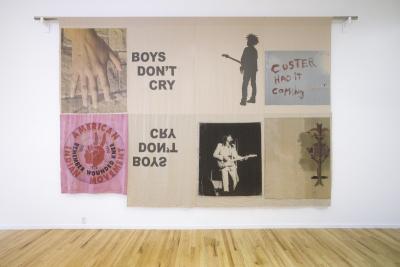
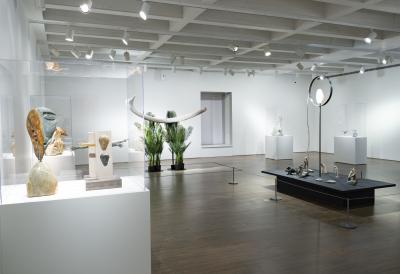
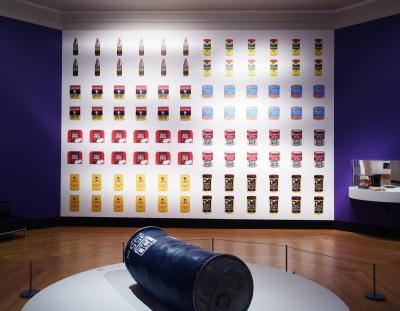

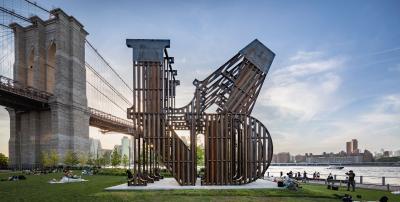
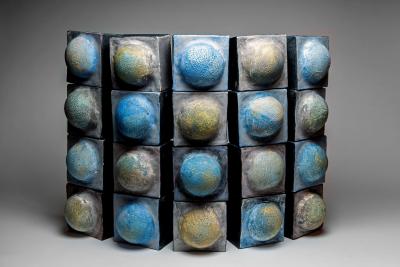
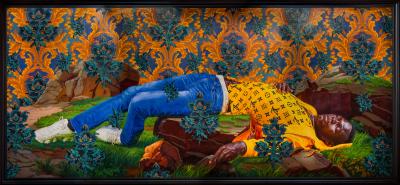
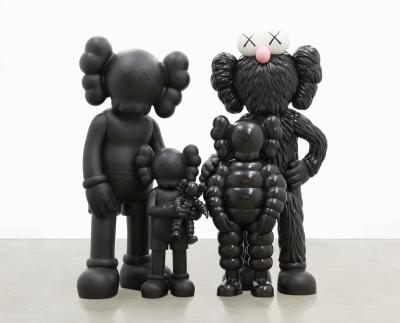
![Keith Haring in a Top Hat [Self-Portrait], (1989)](/sites/default/files/styles/image_small/public/2023-11/KHA-1626_representation_19435_original-Web%20and%20Standard%20PowerPoint.jpg?itok=MJgd2FZP)

